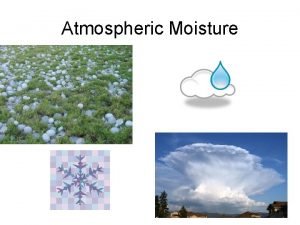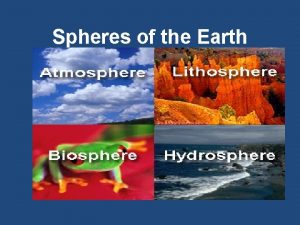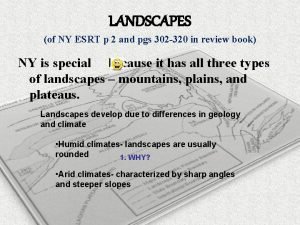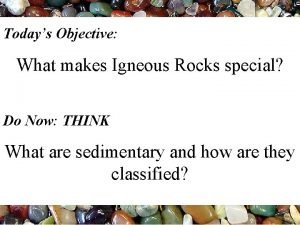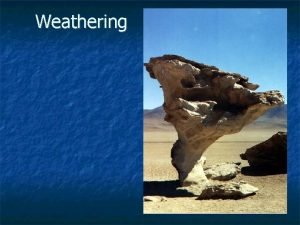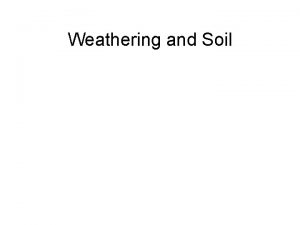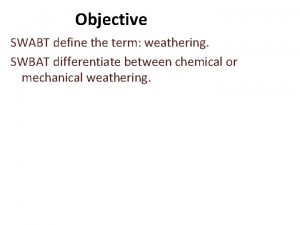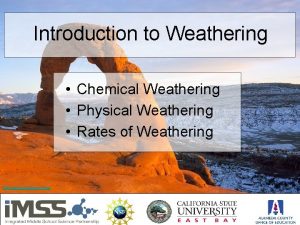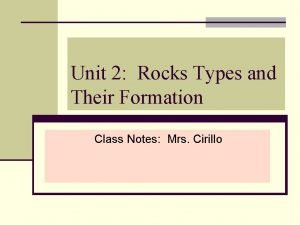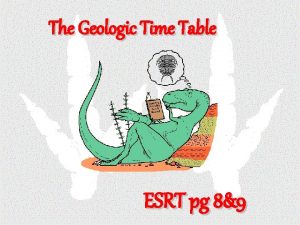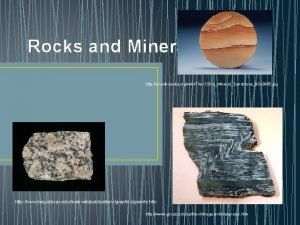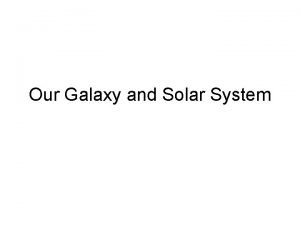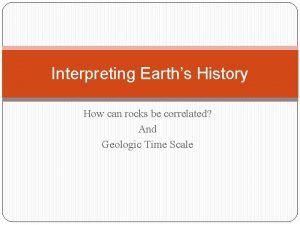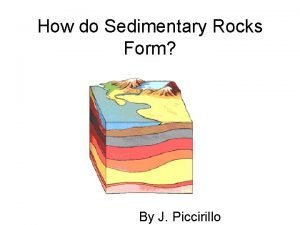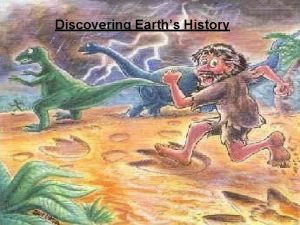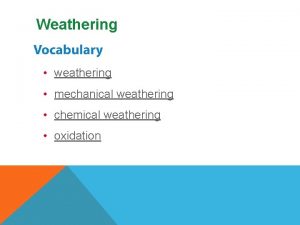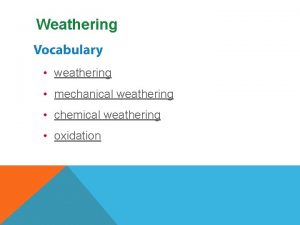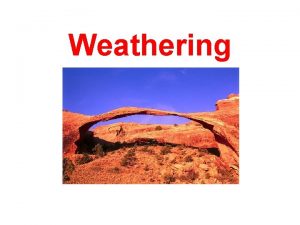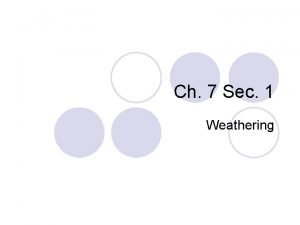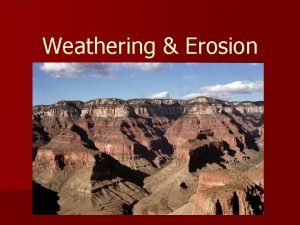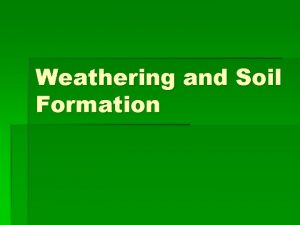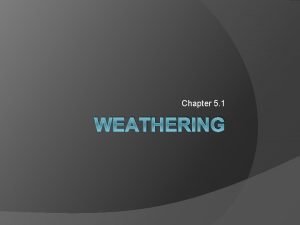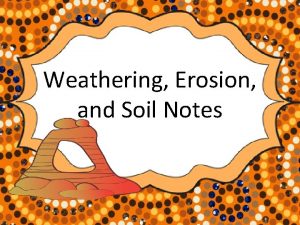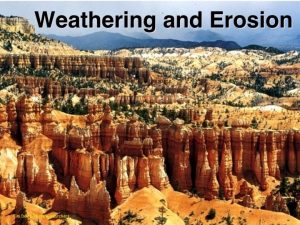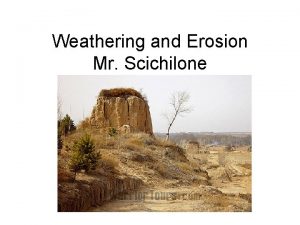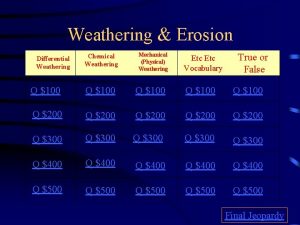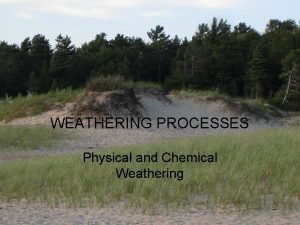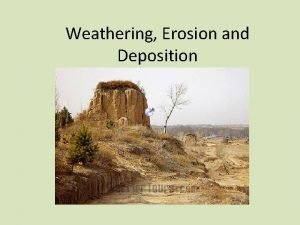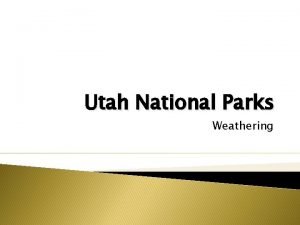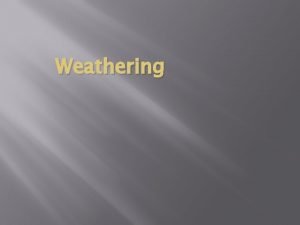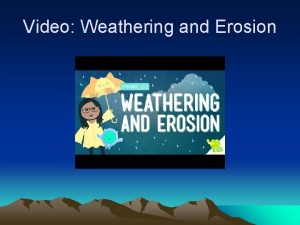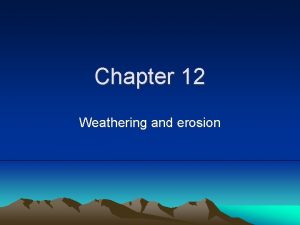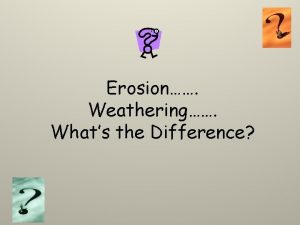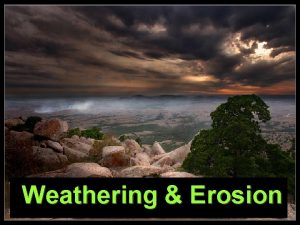WEATHERING WED Cycle ESRT PAGE 6 The water
































- Slides: 32

WEATHERING


W-E-D Cycle ESRT PAGE 6 The water cycle aides in the Weathering-Erosion. Deposition Cycle

Weathering Weathering: The breaking down of material at or near the Earth’s surface

Physical Weathering A. Physical (Mechanical) Weathering: Changes in the size and/or shape of a rock without changing the rock’s composition

1. Ice Wedging/Frost Action: Water in the cracks of rocks freezes -> volume of the water increases->makes cracks larger->water melts & evaporates

Physical Weathering 2. Plant Action: Tiny root hairs seek out the breaks in rocks ->roots grow and expand causing greater pressure -> breaks the rock further

3. Exfoliation: Peeling away of large sheets of loosened materials at the surface of a rock due to changes in pressure or temperature

Abrasion 4. Abrasion: The physical wearing down of rocks as they rub or bounce against each other. Five Natural Agents of Abrasion a. b. c. d. e. Flowing water Moving ice Waves Winds Gravity

Physical Weathering in Action Visualization

In Your Own Words (10 mins) Write the definition of physical weathering in your own words Draw 4 boxes In each box, define each type of physical weathering in your own words, or draw an illustration of what happens during each type of weathering


Chemical Weathering B. Chemical Weathering. Changes in the mineral composition of a rock thereby forming new substances. 1. Oxidation: Occurs when oxygen interacts chemically with minerals. The rusting of iron is an example of oxidation.

2. Hydrolysis/Water: Occurs when there are chemical reactions between water and minerals

A Famous Example

Dissolution/Acid 3. Dissolution/Acid: Occurs when minerals are “dissolved” over time - surface has a ‘sugary’ feel. Ex. Acid rain and carbonic acid are agents

Chemical Weathering in Action Chemical Weathering Visualization

In Your Own Words (10 mins) Write the definition of chemical weathering in your own words Draw 3 boxes In each box, define each type of chemical weathering in your own words, or draw an illustration of what happens during each type of weathering



Gravestone: Shale

Gravestone: Granite

Gravestone: Sandstone

Gravestone: Marble

Rates of Weathering Rates of weathering will be influenced by… 1. Exposed surface area- weathering occurs on the surface. The more surface exposed, the faster weathering will occur.

Rates of Weathering 2. Mineral compositionsome minerals are more resistant than others. For example, quartz is resistant to chemical and physical weathering.

The more resistant a mineral is to weathering, the more time it takes to wear down the material.

Granite vs. Limestone

Rates of Weathering 3. Climatic conditions Warm, wet climates favor chemical weathering. Cold, wet climates favor mechanical weathering Dry will have more mechanical

Frost wedging works best in areas where the temperature changes often- going from below freezing to above freezing regularly


Video https: //www. youtube. com/watch? v=RIak 3 Wvh 9 c If the video link doesn’t work, search for “Crash Course Kids Weathering and Erosion”
 Frost wedging drawing
Frost wedging drawing Sedimentary rock concept map
Sedimentary rock concept map Esrt rocks
Esrt rocks Esrt page 12
Esrt page 12 Esrt pg 14
Esrt pg 14 Esrt page 2
Esrt page 2 Weathering rocks
Weathering rocks Esrt pg 6
Esrt pg 6 Water and water and water water
Water and water and water water Physical weathering
Physical weathering Kinds of weathering
Kinds of weathering Define the term weathering?
Define the term weathering? Example of chemical weathering
Example of chemical weathering Esrt sedimentary rocks
Esrt sedimentary rocks Esrt pg 8
Esrt pg 8 Esrt pg 8
Esrt pg 8 What are sedimentary rocks
What are sedimentary rocks Metamorphic rocks properties
Metamorphic rocks properties Esrt planets
Esrt planets Esrt pg 15
Esrt pg 15 Esrt pg 8
Esrt pg 8 Esrt sedimentary rocks
Esrt sedimentary rocks Esrt pg 15
Esrt pg 15 Esrt pg 8
Esrt pg 8 Esrt pg 15
Esrt pg 15 Brain pop water cycle
Brain pop water cycle Water cycle the hydrologic cycle
Water cycle the hydrologic cycle Apa running head
Apa running head Hát kết hợp bộ gõ cơ thể
Hát kết hợp bộ gõ cơ thể Ng-html
Ng-html Bổ thể
Bổ thể Tỉ lệ cơ thể trẻ em
Tỉ lệ cơ thể trẻ em Voi kéo gỗ như thế nào
Voi kéo gỗ như thế nào



